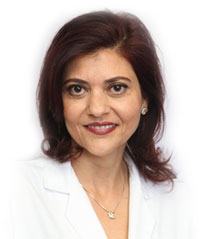Dentistry for children requires special considerations, such as minimizing psychological trauma, controlling anxiety and unruly behavior, and helping them feel more relaxed, safe and comfortable when undergoing various dental procedures. It is important that parents restrict the intake of food and drink before their child goes under sedation since this poses the risk of stomach contents being vomited and inhaled (aspiration) into the lungs. The child shouldn't wear tight clothing since this increases their level of anxiety and harder for dental assistants to attach monitors quickly and easily before he or she is sedated. The dental practitioner will document vital signs before dispensing a sedative if this is possible.
What Is Sedation Dentistry?
Children sedation dentistry also referred to as “sleep dentistry” uses medication to help young patients relax during dental procedures. The majority of patients who are sedated are usually awake during their procedure except for those who receive general anesthesia. The different degrees of sedation are the following:
- Minimal sedation - Under minimal sedation, the patient is relaxed but alert.
- Moderate sedation – Under moderate sedation the patient may have slurred speech and recalls little about the procedure.
- Deep sedation –Under deep sedation, the patient borders on being unconscious but can be awakened.
- General anesthesia – Under general anesthesia, the patient is completely unconscious.
Types of Sedation Used in Dentistry
Sedation for children is done using several methods and depends on the circumstances around the particular procedure.
Inhaled minimal sedation
The dental practitioner will cover the child's nose with a mask to inhale a combination of oxygen/nitrous oxide (laughing gas) in order to relax. The dentist controls the amount of sedation dispensed, and the gas wears off relatively quickly. Children receiving minimal sedation usually don’t require more than observation and periodic assessment of their level of sedation. Some children will still become moderately sedated even if it was intended for them to only reach a minimal level of sedation. If this scenario occurs, the dentist will apply specific guidelines to the patient under moderate sedation.
Oral sedation
The levels of oral sedation covers minimal to moderate sedation which is based on the dosage being dispensed. The child takes a pill (typically Halcion, under the same drug family as Valium) for minimal sedation, and is usually taken about an hour before the procedure. The pill will make the child groggy but he or she will still be awake. A larger dose may be given to produce moderate sedation. Moderate sedation is the most commonly associated type of anesthesia in sedation dentistry.
Moderate oral sedation
Moderate oral sedation can actually make some people groggy enough to fall asleep during a procedure but can be roused with a gentle tap. Only a few pediatric dentists are adequately trained to administer oral sedation. Oral sedation is not considered harmful within dosage guidelines for age and weight of the child.
IV moderate sedation
An IV sedative drug is administered through a vein, so that it causes a relaxed state more quickly. IV moderate sedation is a level of sedation that can be continually adjusted by the dental practitioner.
Deep sedation and general anesthesia
Deep sedation and general anesthesia are medications that will make the child nearly unconscious or totally unconscious during a dental procedure. Patients under deep sedation and general anesthesia can’t be easily awakened until the anesthesia’s effects wear off or are reversed with medication.
The Role of Local Anesthetics in Sedation Dentistry
A numbing medication or local anesthetic is typically needed to numb the site where dental work will take place regardless of which type of sedation is administered to relieve pain the child may feel if the procedure causes any discomfort.
Dentists Performing Sedation for Children
The majority of dentists can administer sedation at the minimal level, with an increasing number being able to administer sedation at the moderate level. Only a minute number of dentists (maxillofacial surgeons, oral, and dentist anesthesiologists) who have completed training in general anesthesia and deep sedation by the Commission on Dental Accreditation (CODA) have the required skill to implement complex techniques in sedation. Some dental offices use a dentist anesthesiologist, who is trained to give all levels of sedation and anesthesia to both children and adults.
Many states require dentists to hold permits in order to perform sedation. The dental board of each state carefully regulates the use of sedation techniques.
How Safe Is Sedation Dentistry?
All types of anesthesia carry some risk. It's generally safe, when given by a seasoned dentists. However, parents who have overweight children or who have children that have obstructive sleep apnea, should discuss their medical history with their dentist before having sedation since they can develop complications from the anesthesia.
It's important to make sure that your dentist has the expertise necessary to execute the level of sedation your child will be receiving, and has thoroughly studied the child's medical history including current intake of herbal supplements, prescribed or over-the-counter medications; this will help the dentist determine if your child is a good candidate for sedation and what dose of the sedative is appropriate for his or her age and health recommended by the FDA.
Look for a dentist who has performed many procedures using sedation. Go over the form detailing the risks of the procedure done under sedation carefully with your dentist. Additionally, the dentist should monitor your child’s vital signs following the American Dental Association's guidelines during the procedure, and have oxygen and drugs ready to reverse the effects of sedation in case they are needed.






